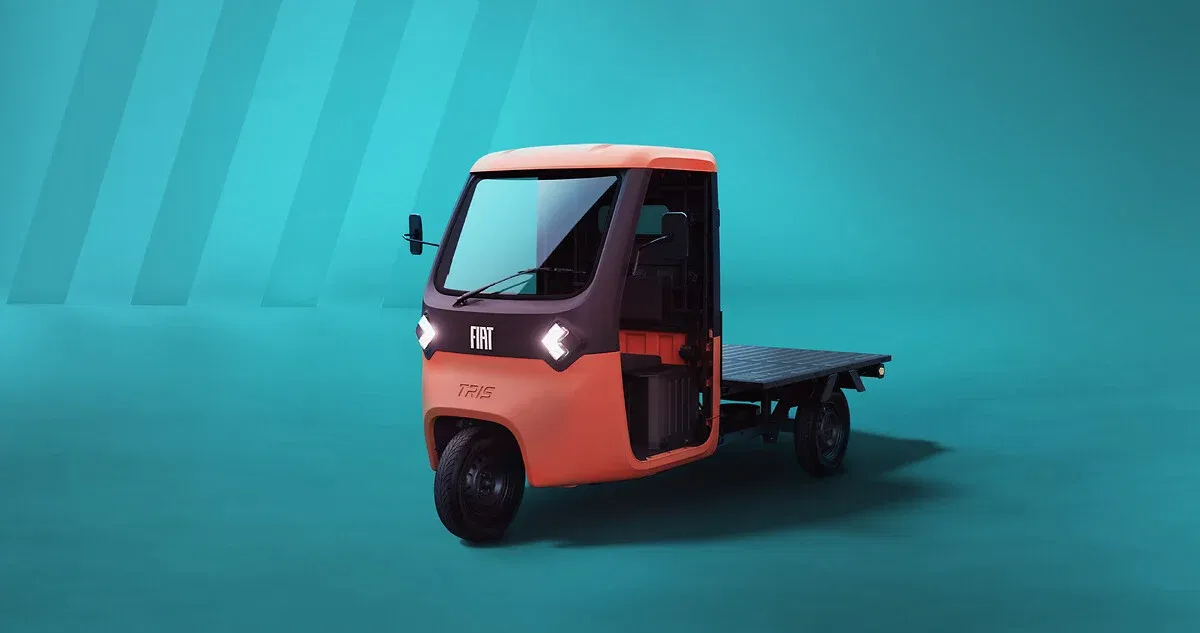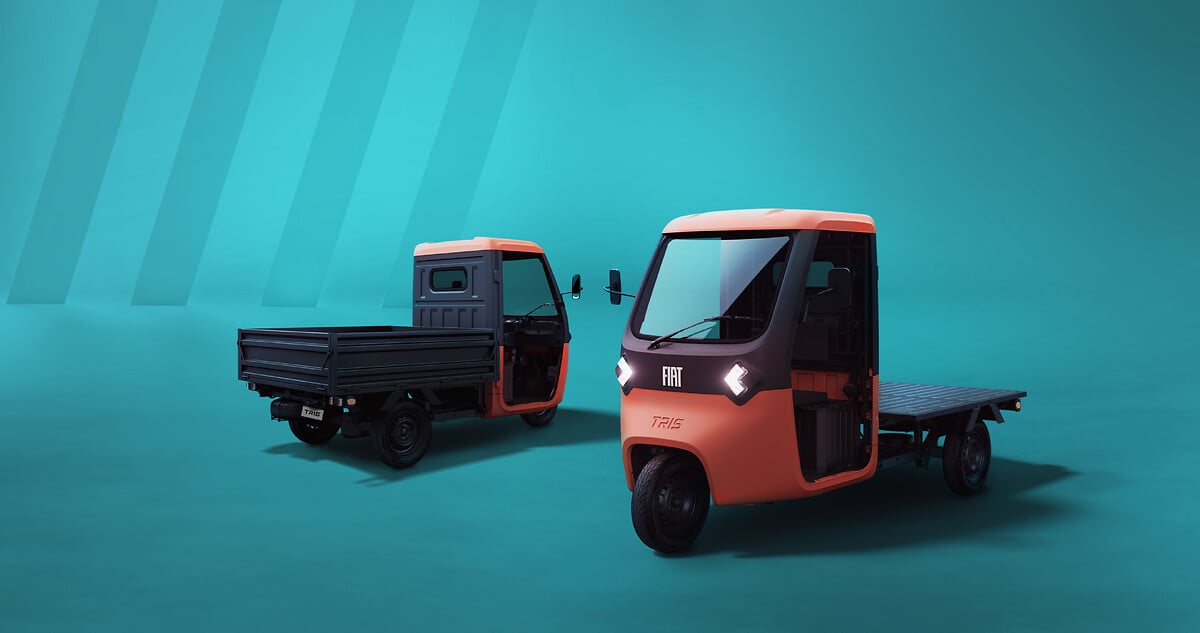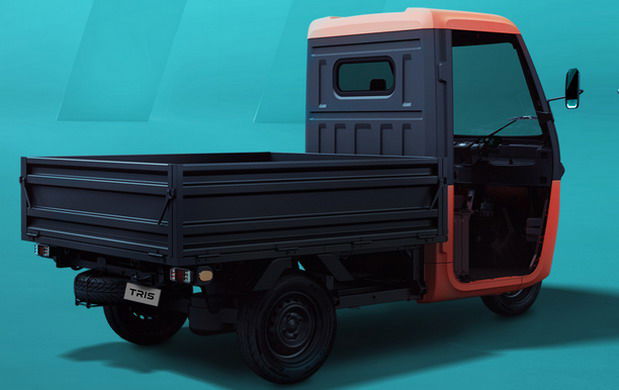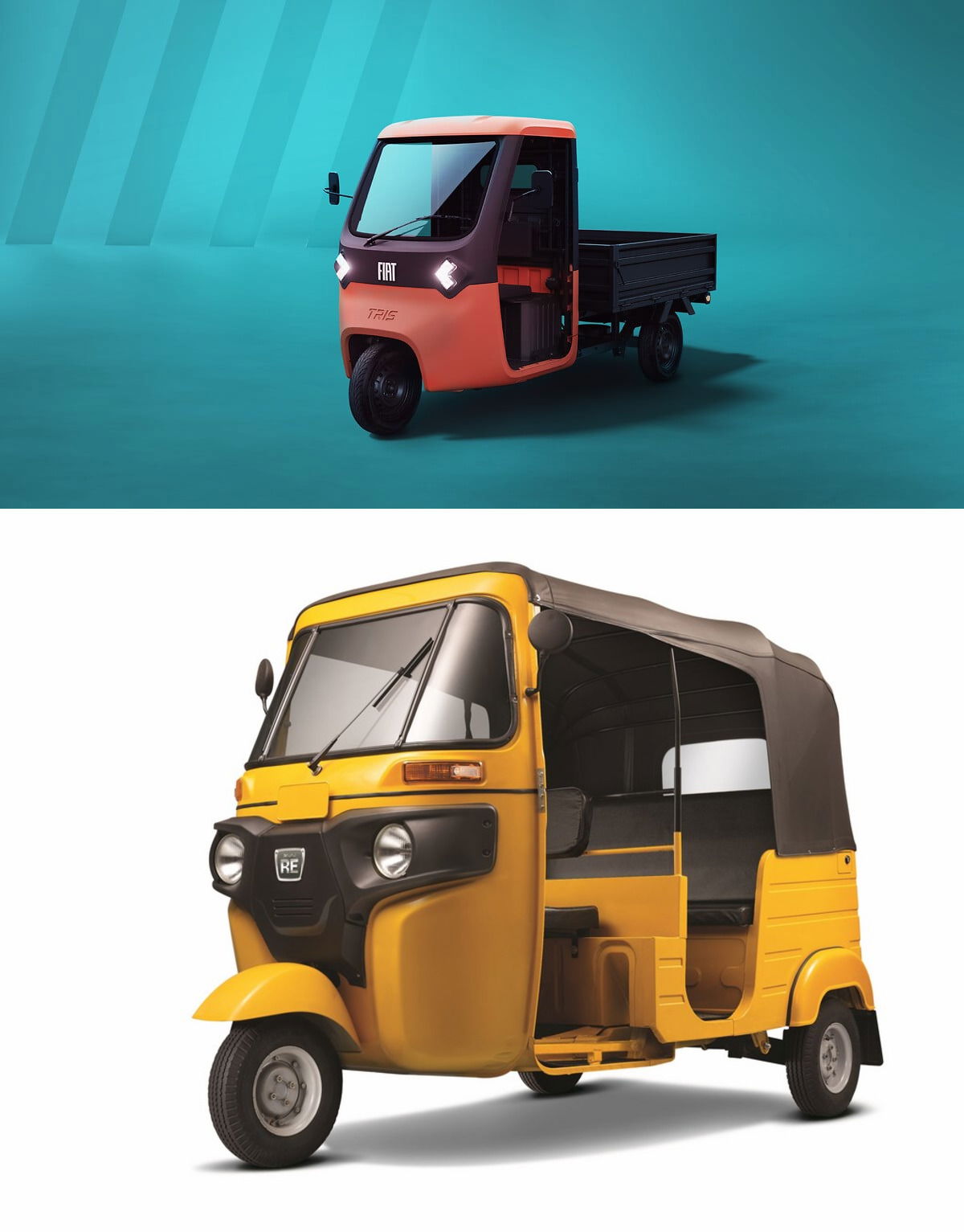Fiat’s ‘Tris’ Wants to Save the Planet—India’s Autos Just Want to Survive the Traffic
In a world where “micromobility” has become the buzzword du jour—a term that sounds like something a tech bro would yell into his oat milk latte, Fiat Professional has decided to join the party with the Tris, a three-wheeled electric vehicle designed for “sustainable B2B last-mile delivery.”
Meanwhile, halfway across the globe, India’s streets are already dominated by three-wheeled contraptions that look less like vehicles and more like abstract art projects assembled by a toddler with a welding torch.
Let’s dive into this clash of cultures, where Italian sophistication meets Indian jugaad (a Hindi term for “making it work with whatever’s lying around”). Spoiler alert: One of these trikes has a charging port, and the other has a driver who charges extra if you ask him to take a U-turn.
See also:
Design Philosophy—Milan Fashion Week vs. Mumbai Traffic

Fiat Tris.
The Fiat Tris is what happens when you let Italians design a delivery vehicle. It’s minimalist and probably comes with an optional espresso machine (not confirmed, but one can only hope).
With its sleek exterior, compact dimensions, and a cargo bed that looks like it’s never carried anything messier than a tray of cannoli, the Tris is basically the vehicular equivalent of a tailored Armani suit. It’s electric, emissions-free, and promises to “spark a micromobility revolution,” which we assume involves fewer protests than the French Revolution but just as many baguettes.
Now, let’s fly to India, where the humble “trike” (known locally as autos, tempos, or “bhaiyya, station chalo”) is less a “vehicle” and more a “mobile testament to human optimism.” These trikes are typically diesel or CNG-powered, painted in eye-searing neon hues, and decorated with philosophical gems like “Horn OK Please” or “Wait for signal, life is precious.”
The design philosophy here is simple: If it has three wheels and can carry 14 schoolkids, a goat, and a sack of onions simultaneously, it’s roadworthy. The average Indian trike looks like it was built from spare parts salvaged from a shipwreck, which, honestly, it probably was.
Fiat’s Tris boasts “modularity” and “IoT integration,” meaning you can track your delivery via an app. India’s trikes offer a different kind of connectivity: You shout your destination at the driver, he nods ambiguously, and you pray to every deity you know that you’ll reach alive. Both systems work, but only one comes with a 5-star safety rating. (Hint: It’s not the one with the goat.)
Performance—Silent Whir vs. Symphony Of Chaos

Fiat Tris with flat bed.
The Tris glides through city streets with the quiet dignity of a librarian on a Segway. Its electric motor hums discreetly, as if apologizing for existing.
The acceleration is smooth, the ride is cushioned, and the only emissions are the passive-aggressive glances from cyclists jealous of its cargo space. It’s perfect for delivering organic kale to a hipster co-working space where everyone wears socks with sandals.
Compare this to the Indian trike experience, which is less “delivery vehicle” and more “extreme sport.” The moment you climb in, the driver floors the accelerator, and suddenly you’re hurtling through traffic at speeds that defy physics, logic, and several traffic laws.
The engine roars like a disgruntled walrus, the suspension is nonexistent, and every pothole feels like the vehicle is trying to cough up a lung. Passengers emerge with a newfound respect for life, a slight limp, and a story that begins with “So there I was, clinging to the roof…”
The Tris has a top speed of 28 mph (45 km/h), which Fiat claims is “ideal for urban environments.” Indian trikes, meanwhile, operate on the principle that speed limits are merely suggestions, like “serving sizes” on a bag of chips.
Drivers weave through traffic with the confidence of a grandma at a Black Friday sale, narrowly missing cows, pedestrians, and the occasional elephant. If the Tris is a scalpel, the Indian trike is a chainsaw—crude, terrifying, and weirdly effective.
Cultural Significance—Status Symbol vs. National Treasure

In Europe, the Tris will likely become a darling of eco-conscious startups and urban planners who use phrases like “carbon footprint” unironically. It’ll be parked outside vegan bakeries and boutique PR agencies, its pristine cargo bed holding reusable tote bags filled with artisanal sourdough.
Driving a Tris will signal that you care about the planet, or at least care about people thinking you care about the planet. In India, the trike is a cultural icon. It’s the Swiss Army knife of transportation: part taxi, part moving van, part wedding venue (decorated with flowers and tinsel, naturally).
It’s how students get to school, how farmers get to markets, and how uncles get into arguments with strangers over fare prices. The trike driver is a philosopher-king, dispensing wisdom like “Sahab, petrol ka daam badh gaya hai, na” (“Sir, fuel prices have risen, you know”) while maneuvering through an intersection that hasn’t seen a traffic light since the British left.
The Tris may have a “sustainable mission,” but the Indian trike has something better: soul. It’s survived decades of monsoons, potholes, and questionable repairs involving duct tape and hope. Try telling a Mumbai trike driver about “IoT integration,” and he’ll respond, “IoT? Yeh IODINE ki goli hai?” (“IoT? Is this an iodine pill?”).
See also:
Environmental Credentials—Greenwashing vs. “We’re Trying, OK?”

Fiat’s Tris is electric, so it’s marketed as the poster child for green logistics. It’s part of Stellantis’s grand plan to save the planet, one overpriced almond milk cappuccino delivery at a time.
The Tris has swappable batteries, regenerative braking, and a carbon footprint smaller than a Kardashian’s attention span. It’s the kind of vehicle Greta Thunberg would approve of, assuming she doesn’t mind corporate logos on her life’s work. Indian trikes, on the other hand, run on fuels that were probably phased out of Europe in the 1980s.
A typical trike emits a smoky exhaust plume that could double as a signal fire. But here’s the twist: In a country where “last-mile delivery” often means a guy named Raju hauling a fridge on his back through a monsoon, trikes are the eco-friendly option.
Sure, they’re not electric, but they’re smaller, cheaper, and more efficient than the trucks they replace. Plus, their carbon footprint is offset by the sheer number of people they carry. One trike = 12 passengers = 12 fewer motorcycles. That’s math even a Tris engineer can respect.
The Verdict—Apples vs. Oranges (But Both Are Fruit)

Comparing the Fiat Tris to an Indian trike is like comparing a Tesla to a camel. One is cutting-edge, minimalist, and obsessed with optics; the other is ancient, slightly smelly, and gets the job done through sheer stubbornness. The Tris is a marvel of modern engineering, perfect for cities where “sustainability” is a marketing budget line item.
The Indian trike is a triumph of human ingenuity, perfect for cities where “sustainability” means “I can’t afford a car.” Will the Tris revolutionize last-mile delivery? Maybe. But let’s not forget that India’s trikes have been revolutionizing last-mile delivery since before Fiat learned how to spell “EV.”
They’re not pretty, they’re not quiet, and they’re definitely not Italian—but they’re real. And in a world obsessed with optics, sometimes real is enough.
Now, if you’ll excuse me, I need to go hail a trike.
Bhaiyya, Bandra station chalo—aur AC on karna. (“Brother, take me to Bandra station—and turn the AC on.”) (There is no AC.)